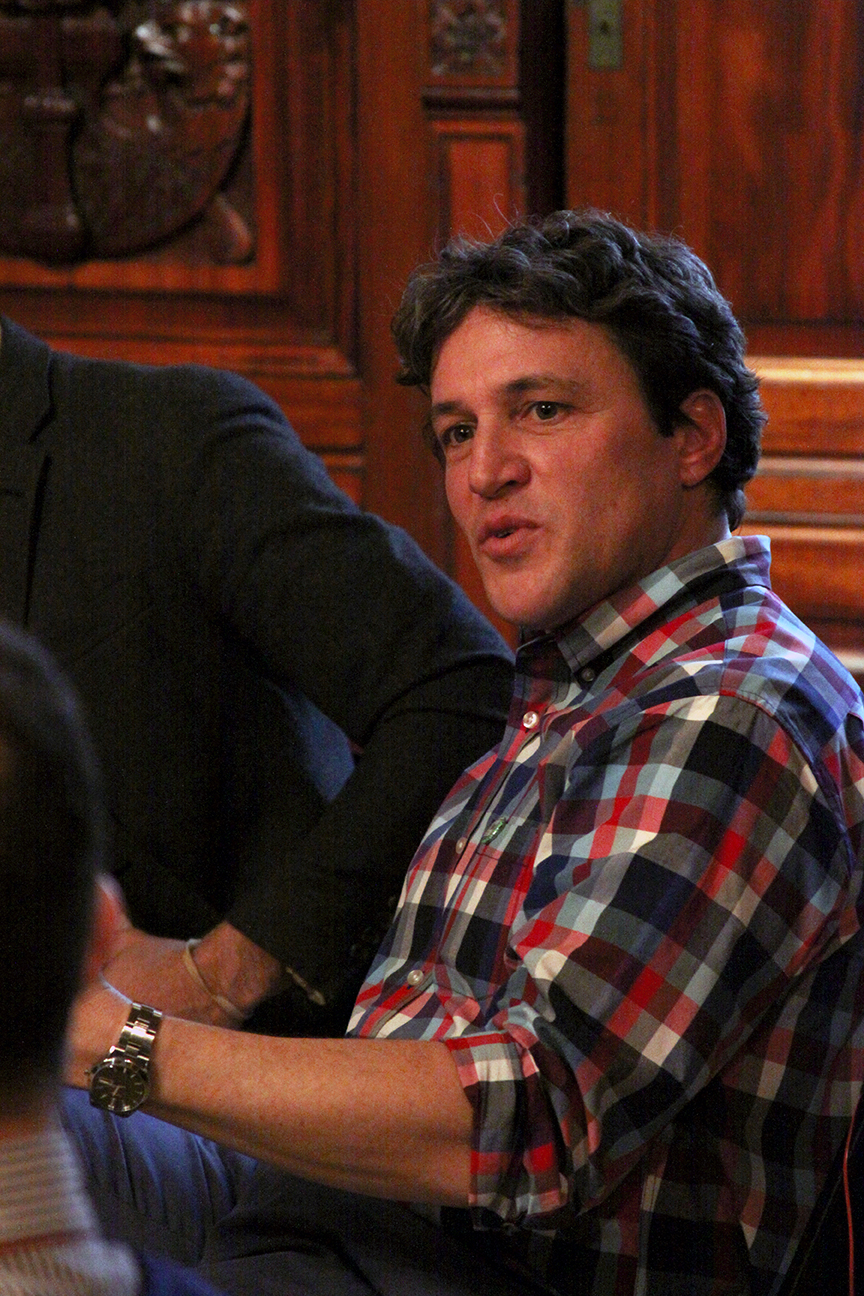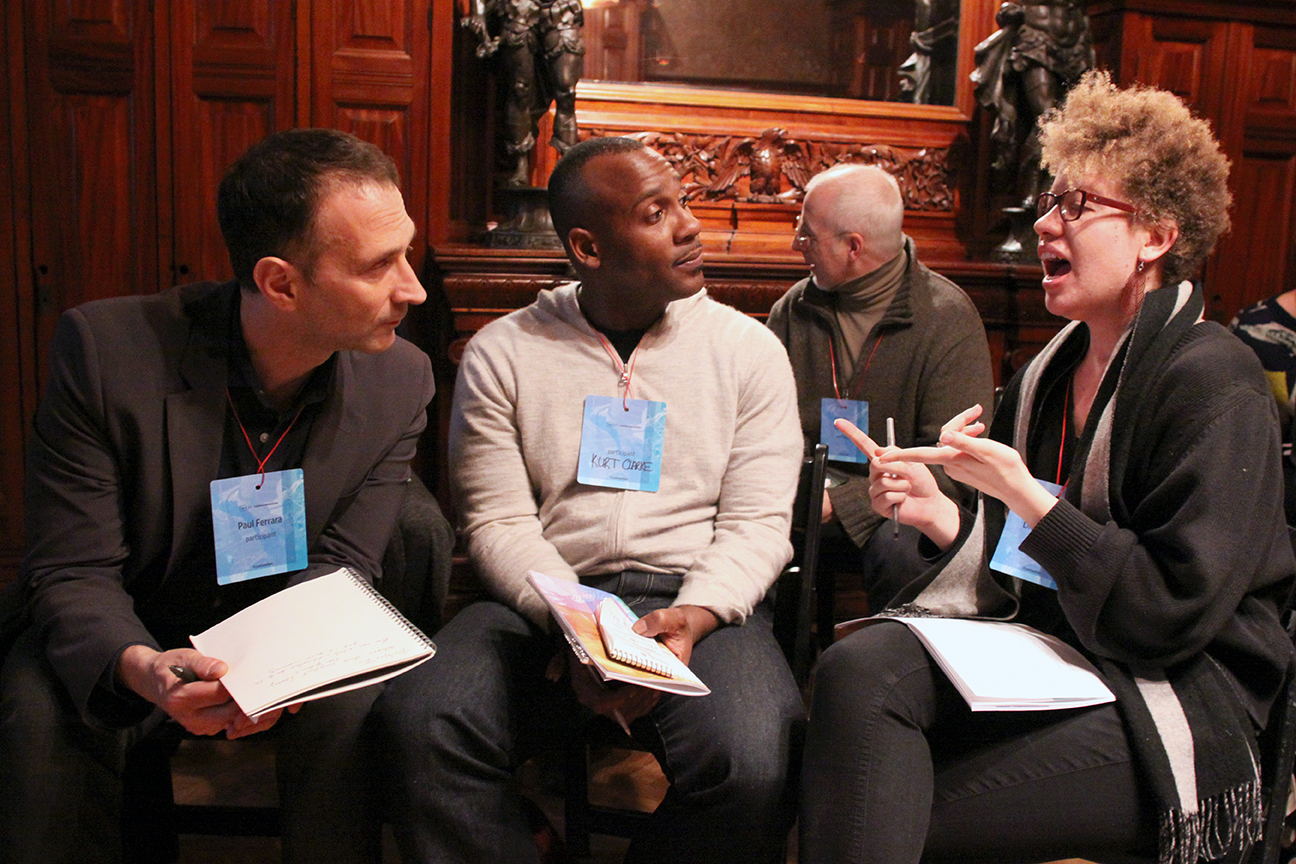Classroom as Community / Community as Classroom
Dialogue
In these dialogues, a moderator sat down with four panelists to delve deep into specific issues surrounding contemporary art education. The panelists were encouraged to visit two separate conversations during the dialogues, so a different group of artists and art educators contributed to the first and second parts of each discussion.
ART21 Senior Education Advisor Joe Fusaro moderated Classroom as Community / Community as Classroom. An exhibiting artist and Visual Arts Chair for the Nyack Public Schools in New York, Joe originally spent 13 years as a teacher and staff developer in the New York City Public Schools before leading staff development workshops in contemporary art education for organizations like the Museum of Contemporary Art in Los Angeles and the Museum of Modern Art.
Part 1
In the first session of Classroom as Community, Community as Classroom, moderator Joe Fusaro posed questions about student learning and the ways in which classrooms and communities function. The panelists discussed pushing the boundaries of school structures, teaching outside of the classroom space, and teaching students through more collaborative means by interacting with the surrounding community.
Discussants:
- Karen Rosner, Coordinator of Visual Arts, New York City Department of Education—New York, NY
- Tomie Arai, Artist—New York, NY
- Dillon Paul, Media Art Teacher, Flushing International High School; ART21 Educator—Flushing, Queens, NY
- José Serrano-McClain, Organizer, Educator, Artist—New York, NY
Significant learning
Where does significant learning take place?
Tomie Arai: I’m a visual artist, and I guess I could use myself as an example of somebody who was impacted by experiences outside the classroom. I don’t actually think of myself as an educator, although teaching is really embedded in all my work… and in my experiences working in schools and with teachers. I came to teaching quite by accident… I was nineteen and a single mother, broke, and an art-school dropout. I was walking down the street in Chinatown, and there were these young people and Asian American artists painting a mural on Pike Street. I must have stood there for about an hour watching them painting until they saw me and invited me to come up and help them. I think it was at that moment that I realized that that was what I wanted to do.
I never knew I wanted to do that kind of work, and I didn’t know how to do it. By watching them, it showed me that it could be done. It was an experience that really changed my life, and I often talk about the murals that I painted afterwards, with young people, for seven years on the Lower East Side, as this huge classroom, because it was a way for me to learn how to be an artist and how to be a teacher. From that one experience, it showed me a direction that I could take with my art and my career.
Dillon Paul: As wonderful as the school community is, you often can’t escape the limitations that the school provides: the schedule, the idea that this is your class, these are the people you’re with, this is your teacher now. You’re being told what to do.
I teach all immigrant students who I often find have these amazing, incredible stories of getting here – of arriving in New York – and they’re triumphant and they’re brave. And then often times they get to Queens, and some of my students get to twelfth grade and they haven’t been to Manhattan, they haven’t been to Brooklyn. They haven’t had the opportunity to explore. I think about how I can give my students that opportunity to just observe and explore the city. And experience the museums, but the walks as much as the museums.
José Serrano-McClain: I work in an art museum that is very much a place-based institution. We sit in the middle of the second largest park in the city, and maybe the most diverse public space in the world, Flushing Meadows Corona Park. As the community organizer for the museum, it’s my job to know which are the pressing conversations happening in the community. What are the urgencies, and how do you then take those and create a learning experience out of them for these community members?
The Queens Museum just got involved in launching what we’re calling the [World’s Park] Community Design School… and we’ve recruited nearly two-dozen community members from every neighborhood that surrounds this vast park. The thought experiment that we’re investigating is, if we were to teach these community members… about urban planning, design, and the particular challenges of this park, at this important time for this park, can those community members take on this role of being civic agents in this place? The kind of learning that’s taking place there is about, “How do we solve the problems of who gets to decide what the future of this park is?” It’s brought me to understand this kind of notion of place-based learning, that our educational experiences are maybe most vivid when they are about the places that we inhabit, the places that we care about, the places that are right outside of the classroom.
Joe Fusaro: We’re thinking about a class with no classroom [at Nyack High School]. It initially started as an idea to run an installation course. My notion was to literally not have a classroom, so that we had to engage with the school community and constantly be making work over the course of the school year that would go into the school community and the campus itself – to rid ourselves of that safe space and those walls.
Expanding horizons
How can we stretch the parameters of and possibilities for art education?
Dillon Paul: I feel really lucky to work in a school that really respects art and is stretching the parameters of what’s considered a traditional school environment. I still feel this impulse to stretch it further and stretch it further. I think even at the level of the Department of Education, everyone needs to be pushed a little bit, and ask the question over and over again: Can we stretch these parameters? Can we push the edges of this structure that feels binding and not always conducive to the best learning?
Karen Rosner: I want to address something that [we] began speaking about, and that is the artist working with the educator. How does that work best? And we were discussing the need for communication. So if a teaching artist is coming into a school, what has to happen before that teaching artist begins to work? What kind of communication? If you were going out on a field trip and you’re working with an artist – and I’m going to call a museum educator an artist – what has to happen beforehand? What needs to be done in the classroom to set that in place? After the artist leaves the building, after the art organization leaves, after the students leave a field trip and they’re back in the classroom, what are you doing afterward to follow up so it’s really seamless?
Tomie Arai: Before my experiences of having been placed in schools through New York Foundation for the Arts residencies, I had no teaching experience. I was called a teaching artist; I was put in a very uncomfortable situation because there was no consultation with the art teacher in the school. I feel that very often artists who are invited to go to schools are not really respectful enough of the art teachers and educators who are there, and there’s an enormous amount of resentment about the fact that an artist can come in with all these resources and support and they can do project-based work and have this amazing thing at the end. I guess that I would say that there has to be a way to communicate and collaborate with artist-teachers who have an enormous amount of training, experience, that they can share if they felt included in the process.
Karen Rosner: Obviously it’s two different worlds – you’re here, they’re there – but there has got to be some kind of meshing, a place where you can come together and build from there.
Part 2
In the second session of Classroom as Community, Community as Classroom, the conversation addressed what a community is, what kind of ownership students can take over their learning spaces, and the shifting relationships between communities and learning institutions.
Discussants:
- Cathleen Lewis, VP of Education and Programs, Museum of Arts and Design—New York, NY
- Luis Camnitzer, Artist—New York, NY
- Rebecca Belleville, Art Educator, Baltimore Design School; ART21 Educator—Baltimore, MD
- Yvette Ramírez, Program Associate, The Laundromat Project—New York, NY
Significant learning revisited
What is significant learning and where does it happen?
Yvette Ramírez: I work as a community organizer. As a young person, when I was in my late teens, learning about what was happening in my neighborhood, being the daughter of immigrants and learning about workers’ rights taught me so much more than what I learned in school, in that classroom space. I was playing with art, using photography to tell those stories through my lens and share that with people who actually have power to possibly change those policies, those stakeholders. For me, most learning happens outside [the classroom] for sure.
Cathleen Lewis: I can’t say that I did an awful lot of learning in my early years in school. I was critical, and I questioned everything. I questioned the fact that they told me I couldn’t wear pants… There were things happening when I was in junior high school in the late ’70s that I didn’t agree with… There was racial unrest. There were things that I was challenging my teachers in school to fully understand. I didn’t feel that I was being mirrored in the school that I attended, which had a huge impact on me – that I didn’t see anyone that looked like me in terms of the teachers there. It was really a challenge for me. So I would have to say that my learning occurred through my community, if not so much in my home, [in] the extension of my home.
Defining community
What is community?
Cathleen Lewis: First of all, I think community is such a loaded term. I grapple with that in the school all the time: “What do you mean by community?” There are all these different types of communities. I think we should create the kind of programming that allows different types of communities to have an entry point… For the Latin American show that we have up right now at the Museum of Arts and Design, there’s an artist in the exhibition that talks about hair and the African Diaspora and how braiding and hair styling and design has permeated different areas. We had different communities doing demos and then speakers. We thought maybe thirty people would come. We had over 120 people show up and they brought their kids. All the speakers brought their networks and all these different communities came together. It was fabulous.
Rebecca Belleville: I think a community is such an organic animal that it’s hard to create community. I think it self-selects; it’s always in flux. People are coming in. People are leaving. In the classroom I find that that’s a forced community, because you have to be there, or you choose not to. And the thing about forced communities is that they don’t work. We’ve all taken a class online, and there’s supposed to be a forum where everyone interacts, and no one’s interacting, right? If you have a particular interest, say that you’re really in love with model cars, and you find these other model car fanatics online, that is a community that you want to be a part of. That is something that you’re opting into, instead of it being this forced creation.
Yvette Ramírez: We [at The Laundromat Project] work primarily with community. What is community? For me, community is someone that maybe shares my ethnicity, not necessarily where I live. It could also mean where you live, and we see it through that lens… If you’re living somewhere, maybe you see the artist, or you see someone who’ll be at the corner store, or the Laundromat, for example, that is very familiar.
Luis Camnitzer: I think it’s an issue of ownership. I always was intrigued when children in a classroom are… serious and bored and half dead. And as soon as there is intermission they go out and play and laugh and are happy. I never understood exactly that qualitative shift. Why do people change personality so radically just by walking out? I think one of the reasons is that once they’re out they create their own community. They own that temporarily, and once they’re in the classroom they’re in borrowed space and the control belongs to somebody else. That can be applied to the museum as well; the museum is owned by someone else.
Moderator’s dialogue reflection
Preparing for Classroom as Community, Community as Classroom, I envisioned an opportunity to get artists and educators to talk about how they establish engaged, purposeful communities in contexts like schools, cultural centers, community organizations and even on the street itself. I was excited to talk about how art-making can affect not just schools and the communities that surround them, but instead share how the distinct “worlds” of artists, educators and communities can better work together. I knew going in that the word “community” is a loaded term, but hey, you have to start somewhere.
When I think about the major takeaways from both conversations I realize that while schools and classrooms don’t always create communities, they can be a place to envision what community can look and sound like outside the walls of schools. Community feels unlimited outside the classroom but is often somehow dictated inside the classroom.
Going forward I am interested in the potential for student ownership in spaces they themselves help create – whether it’s an exhibition, community center or a student artist retreat. I am interested in how artists, teachers and teaching artists can come together to help support this in a range of settings.
– Joe Fusaro
Saturday, February 21st 2015
11:45 a.m. / 1:30 p.m.
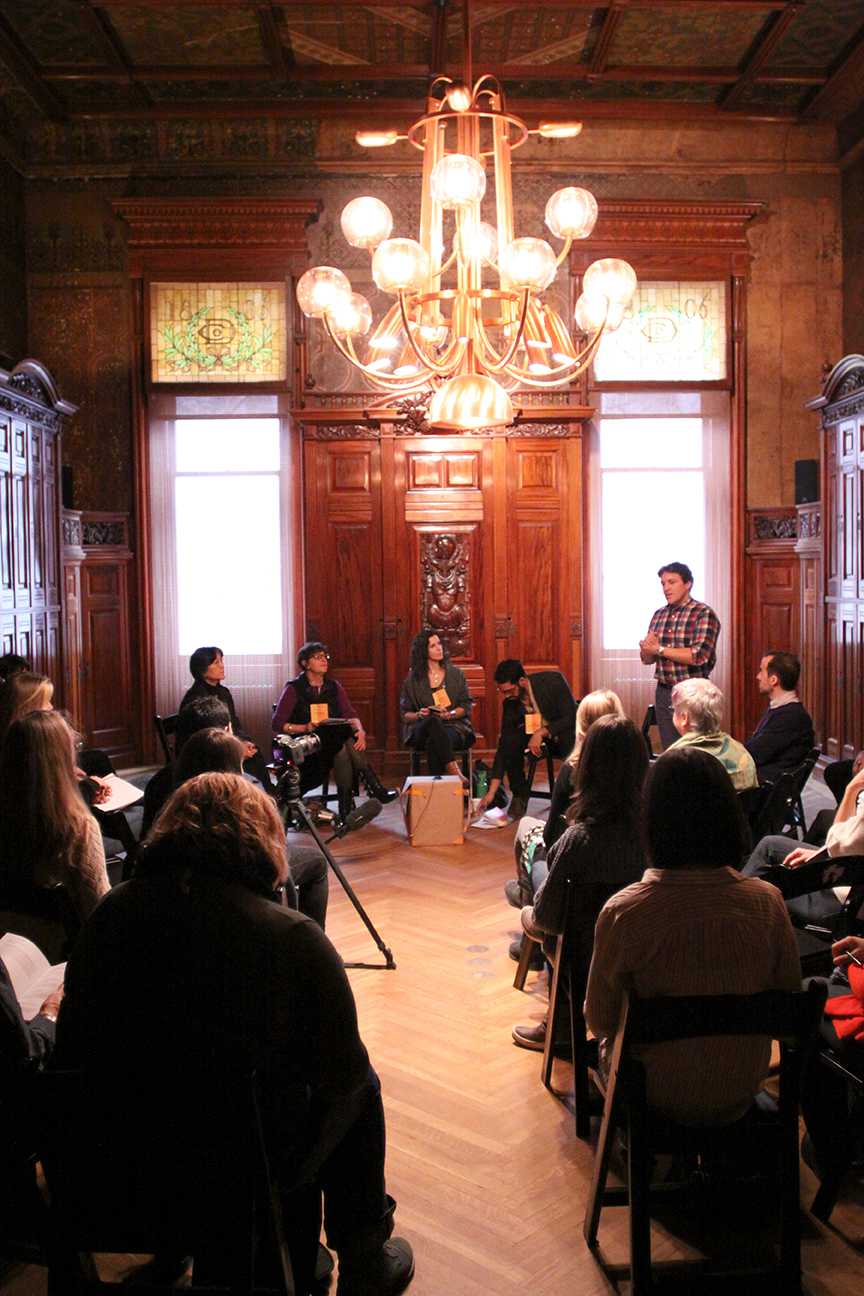

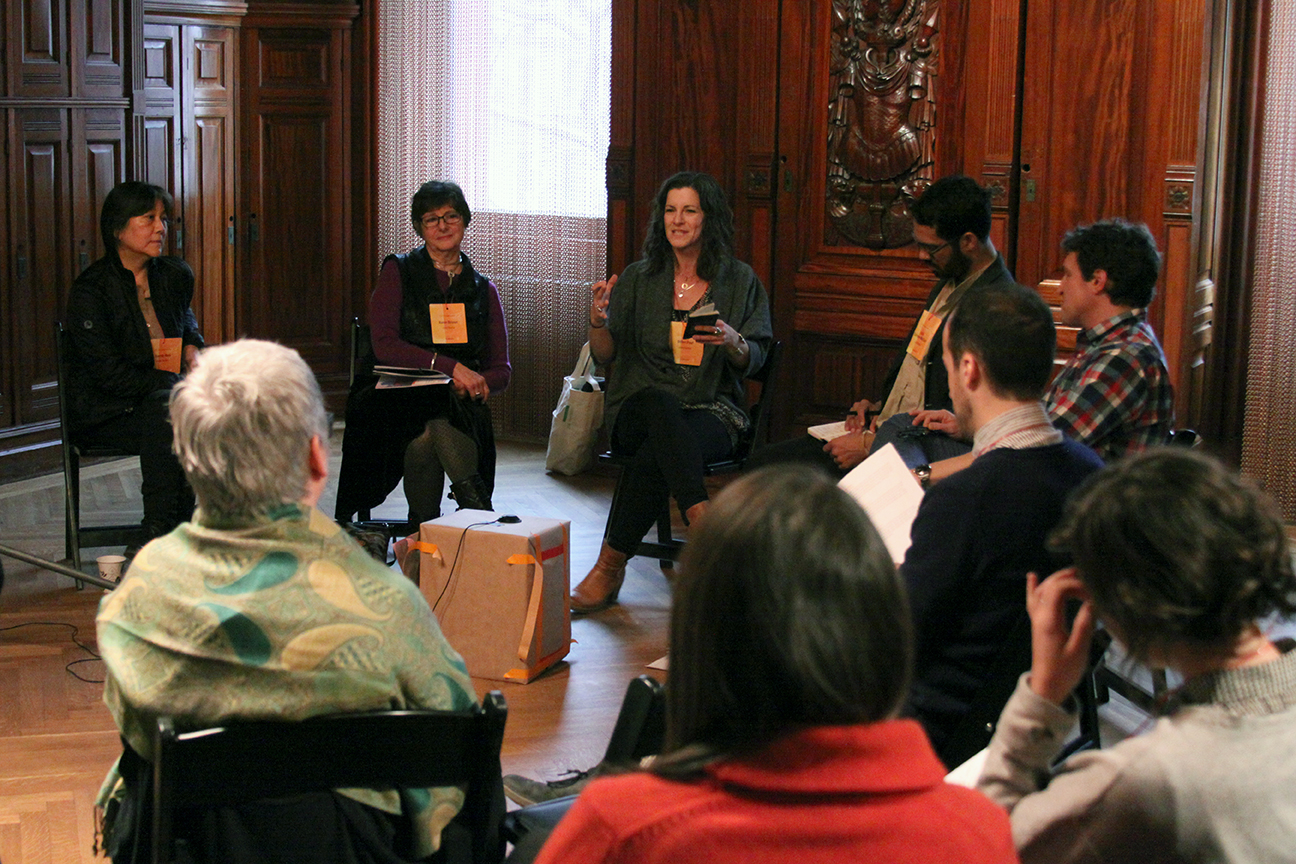
It’s my job to know which are the pressing conversations happening in the community. What are the urgencies, and how do you then take those and create a learning experience out of them for these community members?
— José Serrano-McClain
I think even at the level of the Department of Education, everyone needs to be pushed a little bit, and ask the question over and over again: Can we stretch these parameters?
— Dillon Paul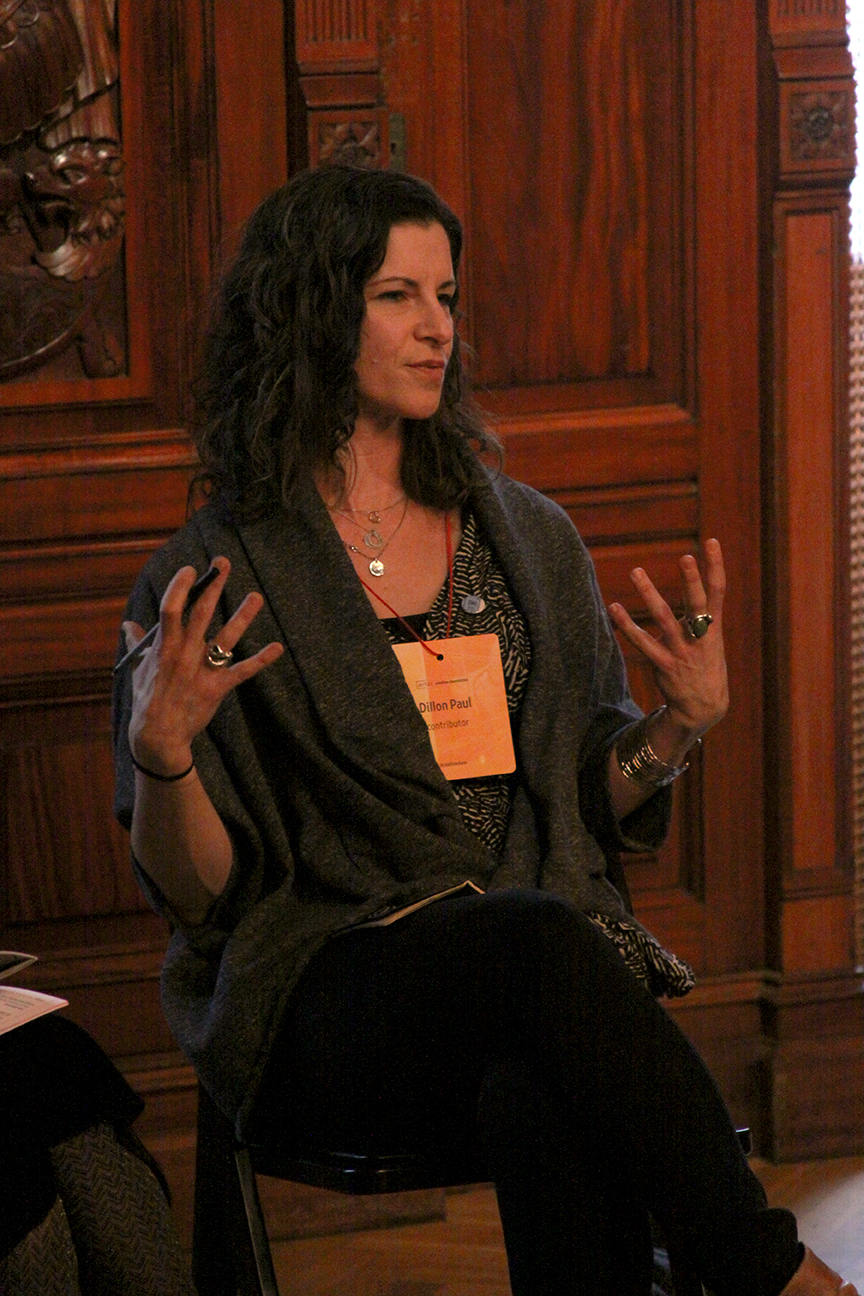

I always was intrigued when children in a classroom are… bored and half dead. And as soon as there is intermission they go out and play and laugh and are happy. I never understood exactly that qualitative shift…
I think one of the reasons is that once they’re out they create their own community. They own that temporarily, and once they’re in the classroom they’re in borrowed space and the control belongs to somebody else.
— Luis Camnitzer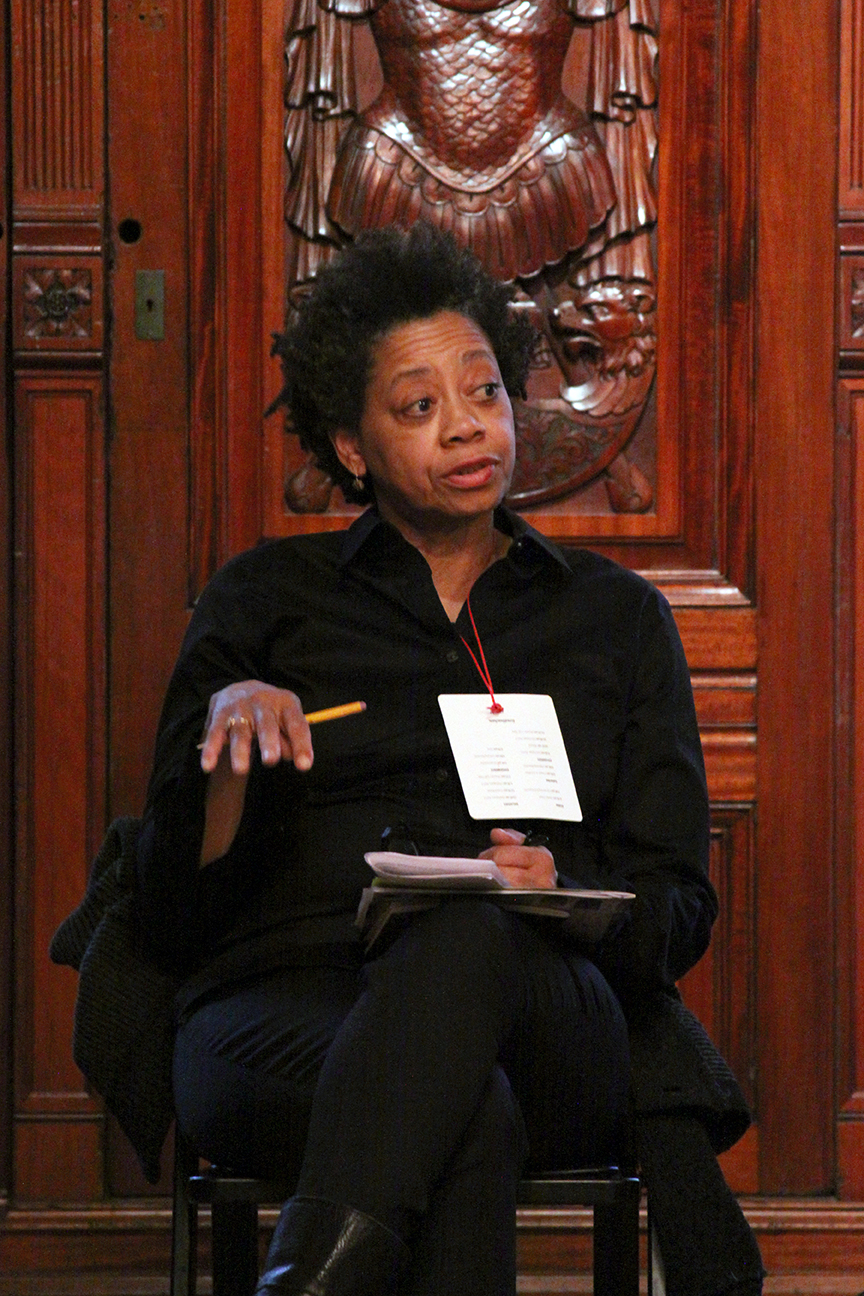

While schools and classrooms don’t always create communities, they can be a place to envision what community can look and sound like outside the walls of schools.
Community feels unlimited outside the classroom but is often somehow dictated inside the classroom.
— Joe Fusaro